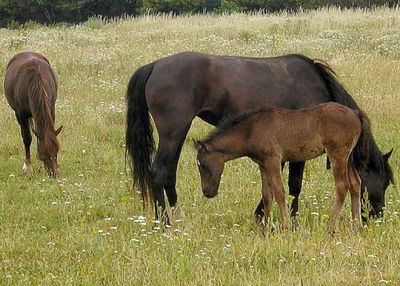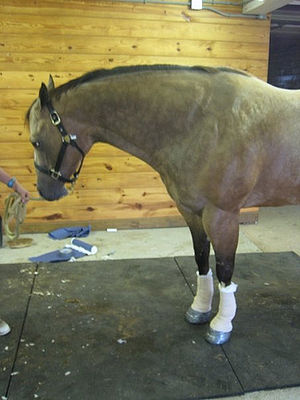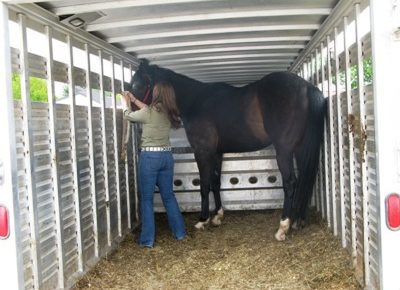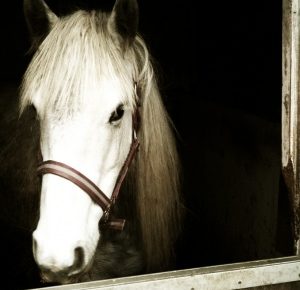
It is estimated that about 60-70% of horses develop what is known as wolf teeth anywhere from birth to 12 months old. They are usually found in the upper jaw near or in front of the first cheek tooth. Wolf teeth are vestigial pre-molars and look like pegs, varying in size. In some instances they remain below the gum.
Wolf teeth were necessary to horses, millions of years ago, when they were small animals dining on twigs and brush. Modern horses are grazers and wolf teeth serve no purpose.
Owners of performing horses usually have the wolf teeth removed so that they don’t interfere with the placement of the bit in the horse’s mouth. Other reasons for removal of these teeth can be that they pinch the mouth, are loose or are broken.
Normally wolf teeth do not cause any problems with a horse chewing. But they can be surgically removed. While a fairly easy operation in most cases, as with any surgery there can be risks and removal should be discussed with your veterinarian.
The horse should have a tetanus vaccination prior to surgery, then a booster 4-6 weeks later. Boosters should be given every 2-4 years as determined by your vet.
Mouth wounds offer a good environment for tetanus bacteria to grow. Tetanus is generally fatal in horses. Since males receive tetanus vaccinations before castration, the problem is more pronounced in females.



